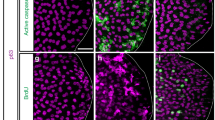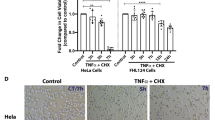Abstract
The regulating mechanism of life and death of cells is a closely coordinated process of adaptation and survival. Selective and controlled cell death is a dominant force in renewing the tissue composition of complex organisms. Elimination of unwanted cells occurs during the normal course of tissue differentiation and also when cells are damaged by various noxious forces.1 The two major mechanisms of cell death are apoptosis (programmed cell death) and necrosis.2 Apoptosis is an active process in which a central biochemical “program” is activated causing nuclear fragmentation, formation of a rigid apoptotic envelope, and shrinkage of the cells into small fragments that are then phagocytosed, often by surrounding parenchymal cells not usually involved in phagocytosis. In necrosis, cells are passive targets of extensive membrane damage, cell swelling, colloidal osmotic lysis, and release of cellular contents. In the development and differentiation of multicellular organisms, apoptosis is the preferred mechanism for eliminating unwanted cell population. In actively cycling cells, proliferation and apoptosis are two opposing pathways for regulating cellular activities. Dysregulation of apoptosis is an important factor in cancer, leading to proliferation of cells, with a mutation in genes favoring proliferation or blocking apoptosis.3 The cell cycle, which includes cellular proliferation and differentiation pathways, is regulated by multiple genes, some of which are oncogenes.4,5 Oncogenes have been divided into two categories: genes that promote cellular proliferation and growth, and genes that regulate apoptosis.
Access this chapter
Tax calculation will be finalised at checkout
Purchases are for personal use only
Preview
Unable to display preview. Download preview PDF.
Similar content being viewed by others
References
Arends MJ, Wyllie AH. Apoptosis. Int Rev Exp Pathol. 1991; 32: 223–254.
Cohen JJ. Apoptosis. Immunol Today. 1993; 14: 126–130.
Williams GT. Programmed cell death. Cell. 1991; 65: 1097–1098.
Yunis JJ. The chromosomal basis of human neoplasia. Science. 1983; 221: 227–236.
Bishop JM. The molecular genetics of cancer. Science. 1987; 235: 305–311.
Hockenbery DM, Nunez G, Milliman C, Schreiber RD, Korsmeyer SJ. Bc1-2 is an inner mitochondrial. membrane protein that blocks programmed cell death. Nature. 1990; 348: 334–336.
Hockenbery DM, Zutler M, Hickey W, Nahm M, Korsmeyer SJ. Bc1-2 protein is topographically restricted in tissue characterized by apoptotic cell death. Proc Natl Acad Sci USA. 1991; 88: 6961–6965.
LeBrun DP, Wamke RA, Cleary ML. Expression of bc1-2 in fetal tissues suggests a role in morphogenesis. Am J Pathol. 1993; 142: 743–753.
Ayroldi E, Cannarile L, Migliorati G, Bartoli A, Niocoletti I. Riccardi C. CD44 (Pgp-1) inhibits CD3 and dexamethasone-induced apoptosis. Blood. 1995; 86: 2672–2678.
Schermer A, Galvin S, Sun TT. Differentiation-related expression of a major 64K corneal keratin in vivo and in culture suggests limbal location of epithelial stem cells. J Cell Biol. 1986; 103: 49–62.
Gunthert AR, Strater J, von Reyher V, et al. Early detachment of colon carcinoma cells during CD95 (APO-1/Fas)-mediated apoptosis. I. De-adhesion from hyaluronate by shedding of CD44. J Cell Biol. 1996; 134: 1089–1096.
Author information
Authors and Affiliations
Editor information
Editors and Affiliations
Rights and permissions
Copyright information
© 1998 Springer Science+Business Media New York
About this chapter
Cite this chapter
Huang, A.J.W., Li, CH., Chen, YW., Bourguignon, L.Y.W. (1998). Co-Expression of BCL-2 and CD44S in Basal Layers of Human Ocular Surface Epithelia. In: Sullivan, D.A., Dartt, D.A., Meneray, M.A. (eds) Lacrimal Gland, Tear Film, and Dry Eye Syndromes 2. Advances in Experimental Medicine and Biology, vol 438. Springer, Boston, MA. https://doi.org/10.1007/978-1-4615-5359-5_74
Download citation
DOI: https://doi.org/10.1007/978-1-4615-5359-5_74
Publisher Name: Springer, Boston, MA
Print ISBN: 978-1-4613-7445-9
Online ISBN: 978-1-4615-5359-5
eBook Packages: Springer Book Archive




